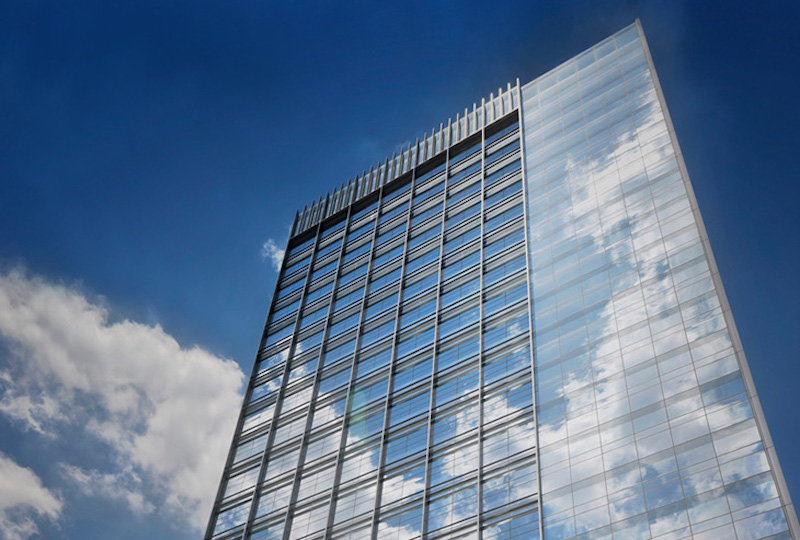Ten years ago, the goal was to convince clients that sustainable design was the solution to climate change. Those days are gone. Now, the majority of our clients have a deep understanding that climate change, air pollution, water quality, and deforestation are threatening the future of our cities. They also know that the built environment plays a significant role as both the cause and the solution. In fact, many Fortune 500 companies now see sustainable design as an opportunity to improve their social, environmental, and long-term economic performance—what many refer to as the Triple Bottom Line. Some have even hired “Directors of Sustainability,” employees whose sole focus is to develop corporate sustainability strategies that align with the company mission statements.
In this new reality, the biggest challenge for Gensler’s clients—including several who are on the Fortune 500 List—is not the lack of concern about the built environment, but the ability to develop a sustainability and resilience plan that aligns with the company’s Triple Bottom Line (i.e. its social, economic, and environmental goals). Unfortunately, too many companies are influenced by the misconception that only some projects can qualify as sustainable. Many people still think that high-performance building projects that are LEED Platinum and Living Building Challenge certified are either too expensive or too complicated to achieve, and that those certifications are reserved only for a few select developments. We try to convince our clients that this isn’t the case. Besides, a few select high-performance buildings by themselves will not go far toward achieving the LEED goals of slowing or even stopping climate change. We need to find sustainable solutions that can guide the design of all projects, whether they involve new buildings of existing ones.
Start with sustainability
At Gensler, we bring sustainable ideas to our projects at the very beginning. This critical first step can transform a risk-averse, cost-conscious construction industry and allow for an open-ended dialog that facilitates a more deeply integrated and visually rich design solution.
Integrate a sustainable process throughout
We also provide our clients with a holistic “integrative process” (see illustration, below) that can reduce ambiguity and stream sustainability and resilience throughout a project. A successful integrative process can lead to the implementation of basic design strategies related to ecology, renewable energy, water conservation, indoor air quality, and local architecture, making the process accessible in a language that everybody can understand.
Starting early allows us to learn and adapt as we go
By implementing a process early, we’re able to provides opportunities for integration of sustainability and resilience, and it furthers a deeper understanding of our clients’ challenges and goals. Only through a holistic integrative design we can begin to act fast and tackle the social and environmental problems we face today.
Sustainability shouldn’t be the goal of just 1 percent of building projects. We need to achieve 100 percent better outcomes.
 Integrated Design - Image courtesy of Gensler.
Integrated Design - Image courtesy of Gensler.More from Author
Gensler | Apr 15, 2024
3 ways the most innovative companies work differently
Gensler’s pre-pandemic workplace research reinforced that great workplace design drives creativity and innovation. Using six performance indicators, we're able to view workers’ perceptions of the quality of innovation, creativity, and leadership in an employee’s organization.
Gensler | Mar 13, 2024
Trends to watch shaping the future of ESG
Gensler’s Climate Action & Sustainability Services Leaders Anthony Brower, Juliette Morgan, and Kirsten Ritchie discuss trends shaping the future of environmental, social, and governance (ESG).
Gensler | Feb 15, 2024
5 things developers should know about mass timber
Gensler's Erik Barth, architect and regional design resilience leader, shares considerations for developers when looking at mass timber solutions.
Gensler | Jan 15, 2024
How to keep airports functional during construction
Gensler's aviation experts share new ideas about how to make the airport construction process better moving forward.
Gensler | Dec 18, 2023
The impacts of affordability, remote work, and personal safety on urban life
Data from Gensler's City Pulse Survey shows that although people are satisfied with their city's experience, it may not be enough.
Gensler | Nov 16, 2023
How inclusive design supports resilience and climate preparedness
Gail Napell, AIA, LEED AP BD+C, shares five tips and examples of inclusive design across a variety of building sectors.
Gensler | Oct 16, 2023
The impact of office-to-residential conversion on downtown areas
Gensler's Duanne Render looks at the incentives that could bring more office-to-residential conversions to life.
Gensler | Sep 13, 2023
Houston's first innovation district is established using adaptive reuse
Gensler's Vince Flickinger shares the firm's adaptive reuse of a Houston, Texas, department store-turned innovation hub.
Gensler | Aug 7, 2023
Building a better academic workplace
Gensler's David Craig and Melany Park show how agile, efficient workplaces bring university faculty and staff closer together while supporting individual needs.
Gensler | Jun 29, 2023
5 ways to rethink the future of multifamily development and design
The Gensler Research Institute’s investigation into the residential experience indicates a need for fresh perspectives on residential design and development, challenging norms, and raising the bar.
















